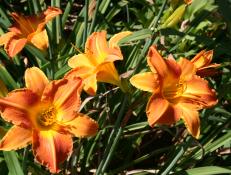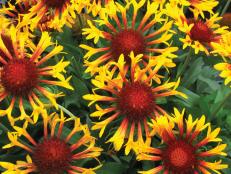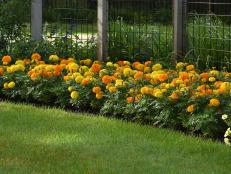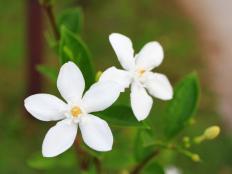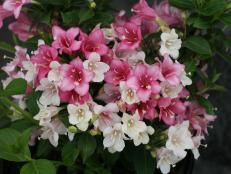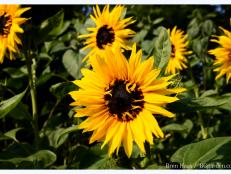Establishing a Wildflower Meadow
A meadow of mixed flowers and native grasses can replace your lawn, cover a slope or enhance a roadside.
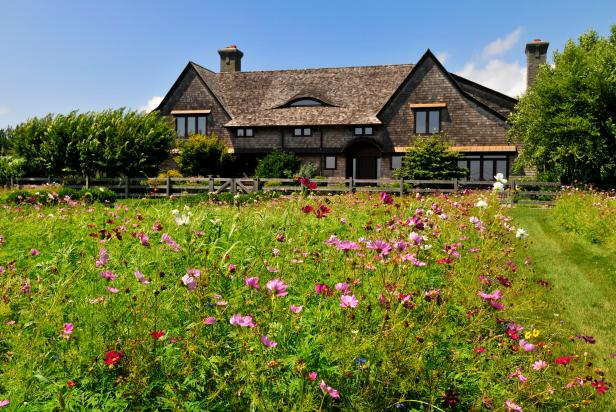
Jonathan Davis; Chris Foster
Most meadows require much less water and fertilizer than lawns do, and they rarely need mowing. For best results, prepare the soil thoroughly before planting.
Tools and Materials
- Mower or clippers
- Steel garden rake
- Sprinkler
- Clear 2- to 4-mil plastic
- Rotary tiller
- Garden fork
- Compost
- Seed mix of wildflowers, grasses
- Broadcast spreader
Step 1: Remove grass and weeds
Mow or cut existing vegetation close to the ground. If you live where summers are routinely sunny and hot, you can clean your soil of weeds by solarizing it (using the sun's heat to kill the seeds). After mowing, till soil, water thoroughly, then cover soil with sheets of clear 2- or 4-mil plastic. (A double layer, separated by a garden hose for instance, increases effectiveness.) Seal the edges with soil or stones. Sunlight passes through the plastic and heats the soil, which stays warm.
Depending upon the amount of sun and how hot it is, the process can take as little as two weeks, or as many as six. As a general guide, gardeners in the south where sun is abundant can solarize soil in the least time. The goal is to raise soil temperatures 3 to 6 inches deep above 100 degrees F. Although commercial growers use the process on a large scale, for home gardeners it's most practical for beds of 1,000 square feet or less.
Once plastic is removed, rotary-till or fork over the area. Water, then wait two weeks for any remaining weed seeds to germinate. When they do, cultivate the area lightly.
Where solarizing the soil is impractical for a large bed or in a cool climate, repeat cultivations can clear the area of weeds. Till the soil, water, wait two weeks, and till again. Repeat this process until few weeds germinate, up to six weeks.
Whichever process you use, it may be necessary to dig or rake out persistent weeds.
Step 2: Prepare the soil
Once soil is mostly weed-free, spread 1 to 2 inches of compost over the cleared area, moisten lightly, and rotary-till or fork it into the top 3 to 6 inches of soil. Again, it is prudent to wait a week or so so, then till or hoe to kill any germinating weeds. Rake smooth.
Determine the right seed mix. Natural, low-maintenance meadows contain a mixture of native grasses with annual and perennial flowering plants. Instead of such a mixture, you might prefer all flowers or all grasses. In either case, it's important to choose a mix that will thrive in your particular sun, soil, and climate conditions. Suppliers of wildflower seed mixes can advise you on the best mixes for your area.
If your meadow receives fewer than 6 hours of direct sun per day, choose a mix for part sun or shade. Mixes that contain only wildflowers usually need reseeding the first few years until the plants produce enough seed to become self-sustaining.
Step 3: Sow seeds
Sowing in mid- to late summer eliminates many of the sprouting weeds that often plague spring plantings, but is useful only for grasses and perennial flowers. If you choose a mix containing many annual flowers, plant in early spring. Using a broadcast spreader, sow seeds at the rate recommended for the mix, and rake gently into the top 1 inch of soil. To allow the plants to become well established, keep the soil evenly moist for the first growing season. Pull up invasive weeds, and tree and shrub seedlings. In subsequent years, plant additional perennials and grasses to fill gaps and replace annuals.
Tips
Many mixes contain common annual flowers, such as bachelor's buttons and cosmos because they are likely to self-sow.
To create the most low-maintenance and natural-looking meadow, plant wildflowers and grasses native to your area.








